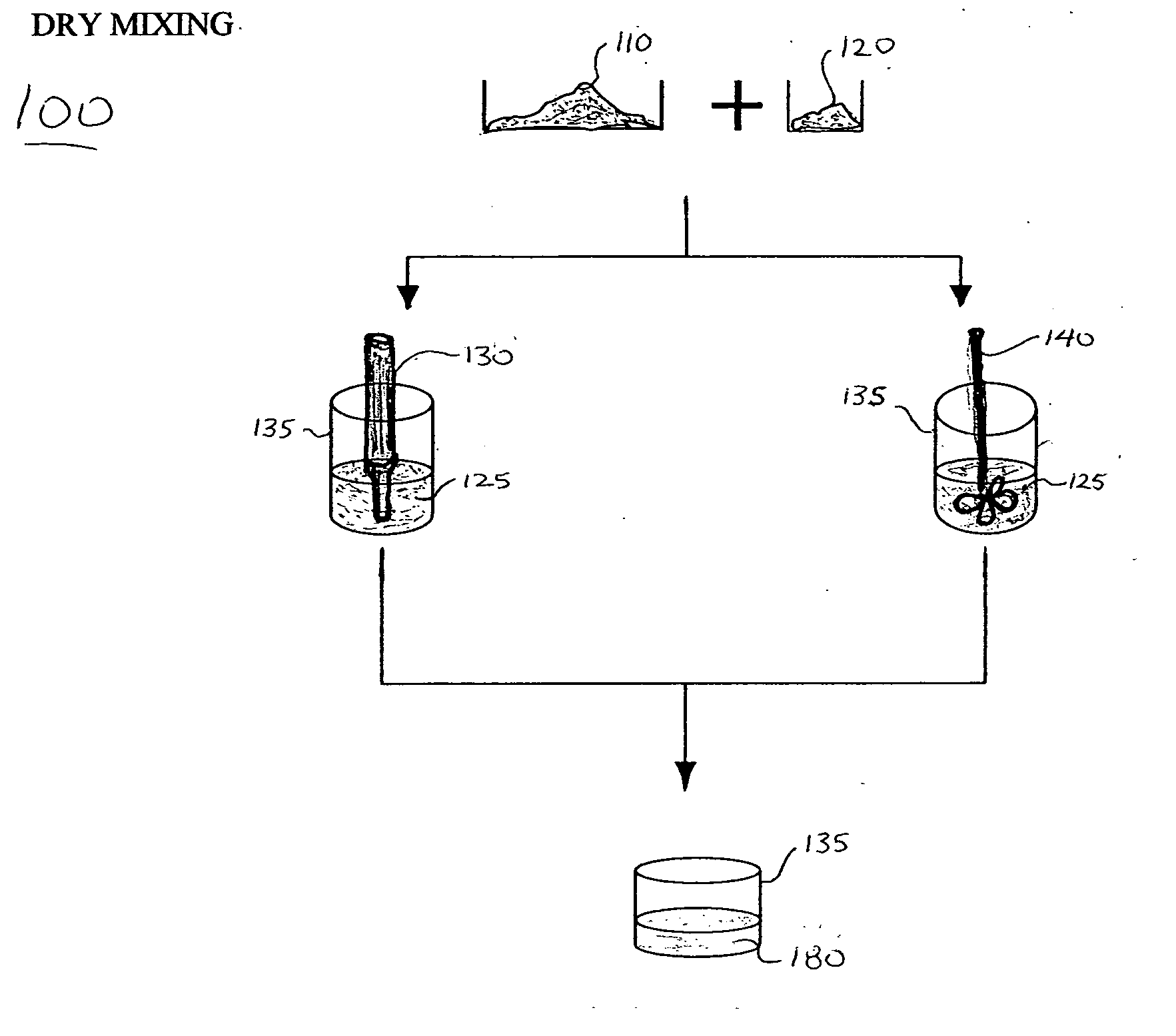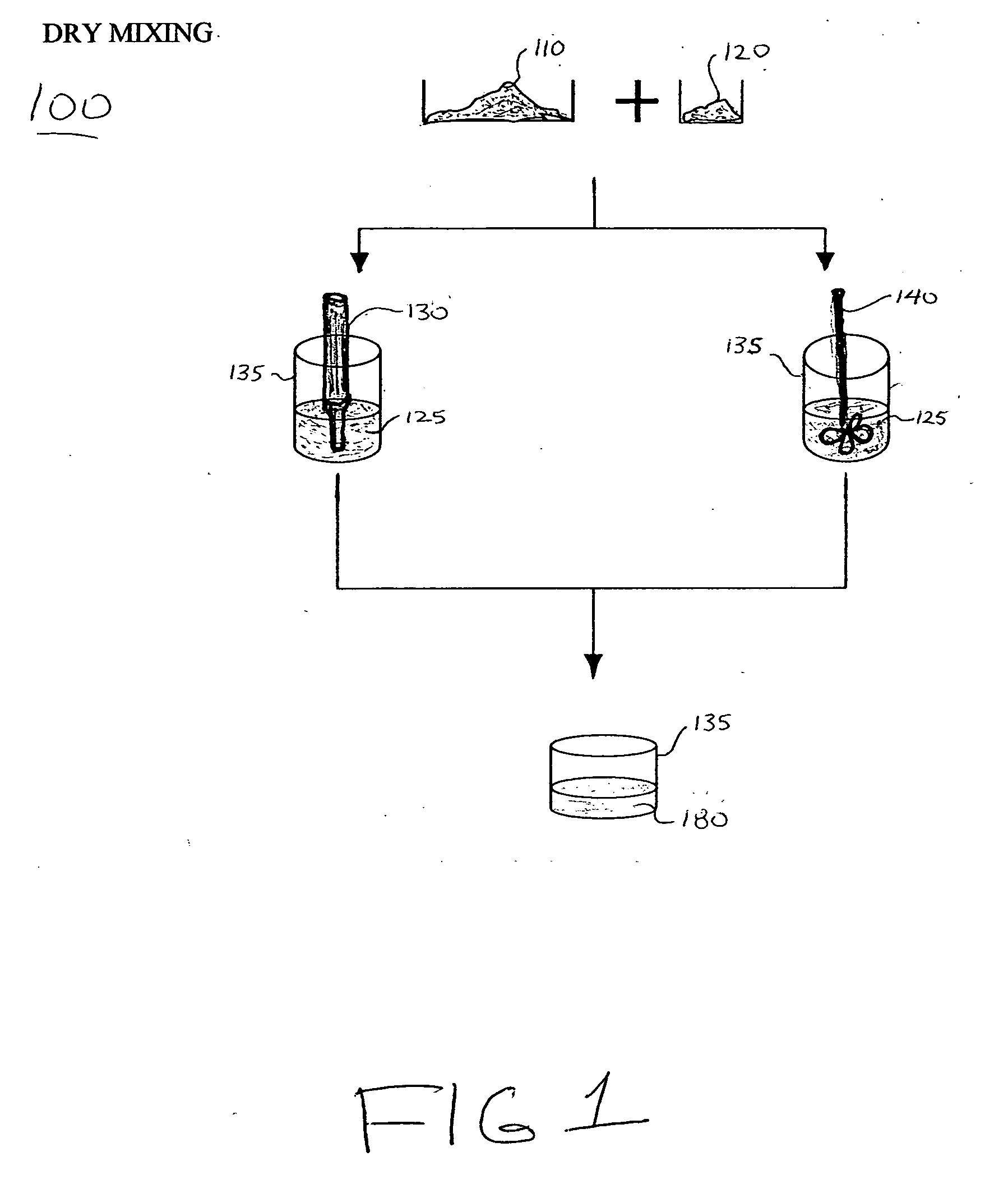Forming homogeneous mixtures of organic materials for physical vapor deposition using dry mixing
a technology of organic materials and homogeneous mixtures, which is applied in the direction of drying machines, manufacturing tools, lighting and heating apparatus, etc., can solve the problems of increasing the cost of the co-evaporation process, flakes or granules are difficult to handle, and the thermal conductivity of organic materials is undetectedly low, so as to achieve fast and cost-effective
- Summary
- Abstract
- Description
- Claims
- Application Information
AI Technical Summary
Benefits of technology
Problems solved by technology
Method used
Image
Examples
working examples
Example 1
Blue Emission Layer
[0049] First, 2.0 grams of organic dopant powder TBP and 8.0 grams of organic host powder TBADN were placed in an airtight glass container. The container was used with the apparatus for mixing powder organic materials as described in the detailed description provided for FIG. 2. The propeller operated at approximately 25,000 revolutions per minute and mixed the powder organic materials for 5 to 7 minutes, until a homogeneous mixture of organic materials was obtained. After mixing, the air-borne particles were allowed to settle inside the container, and the container was opened and 2.0 grams of the homogenous mixture of organic materials was dispensed for compaction.
[0050] The homogeneous mixture of powder organic material was compacted into a pellet suitable for physical vapor deposition. The compacted pellet was placed in a quartz boat and the pellet was heated from the top using a Ta heater according to the prior art described by S. Van Slyke et al, ...
example 2
Red Emission Layer
[0059] First, 0.5 g. of organic dopant powder Rubrene, 0.15 g of another organic dopant powder DCJTB, 4.675 g of organic host powder TBADN, and 4.675 g. of another organic host powder Alq3 were placed in a glass container which was attached to the high speed propeller mixing apparatus. The high-speed propeller operated at approximately 25,000 rpm and mixed the powder organic materials for about 5 to 7 minutes until a homogeneous mixture of organic materials was obtained. Dry argon gas was purged into the container during the mixing process to make sure that Alq3 was not exposed to ambient moisture.
[0060] After mixing, the air-borne particles were allowed to settle inside the glass container, after which, the container was opened and 2.0 grams of the homogenous mixture of organic materials was dispensed for compaction. The homogeneous mixture of powder organic material was compacted into a pellet for the physical vapor deposition process. The compacted pellet was ...
PUM
| Property | Measurement | Unit |
|---|---|---|
| temperatures | aaaaa | aaaaa |
| pressure | aaaaa | aaaaa |
| physical density | aaaaa | aaaaa |
Abstract
Description
Claims
Application Information
 Login to View More
Login to View More - R&D
- Intellectual Property
- Life Sciences
- Materials
- Tech Scout
- Unparalleled Data Quality
- Higher Quality Content
- 60% Fewer Hallucinations
Browse by: Latest US Patents, China's latest patents, Technical Efficacy Thesaurus, Application Domain, Technology Topic, Popular Technical Reports.
© 2025 PatSnap. All rights reserved.Legal|Privacy policy|Modern Slavery Act Transparency Statement|Sitemap|About US| Contact US: help@patsnap.com



